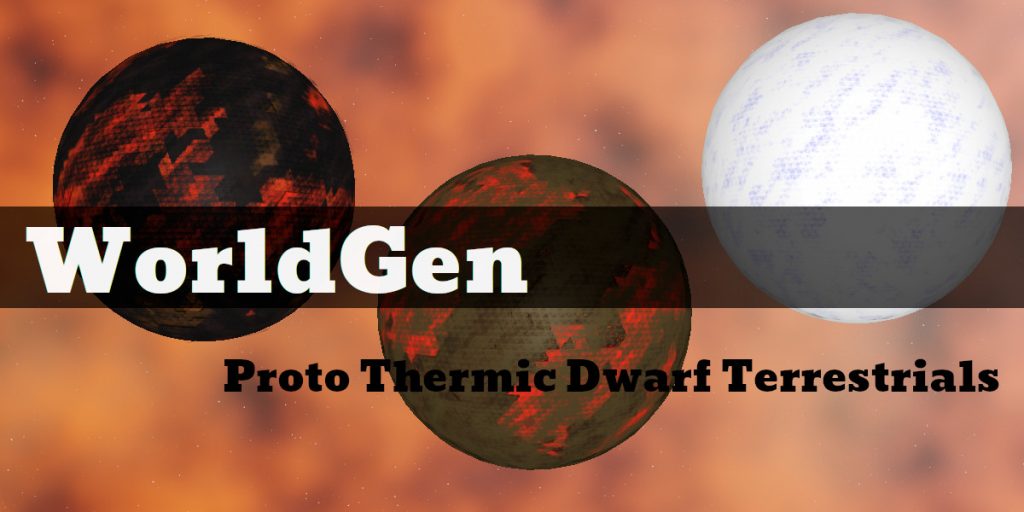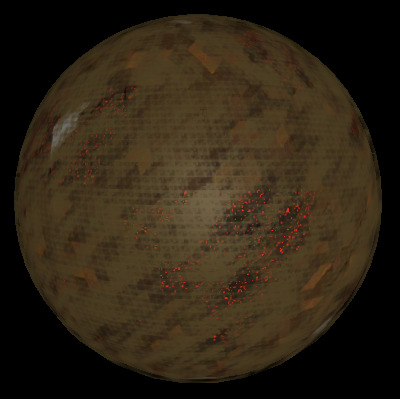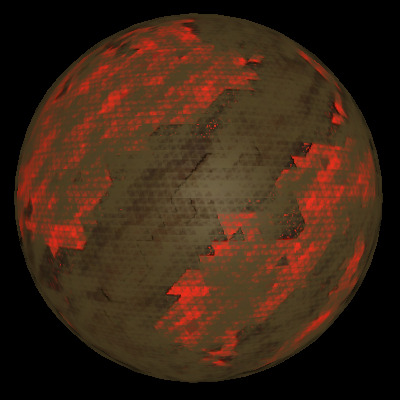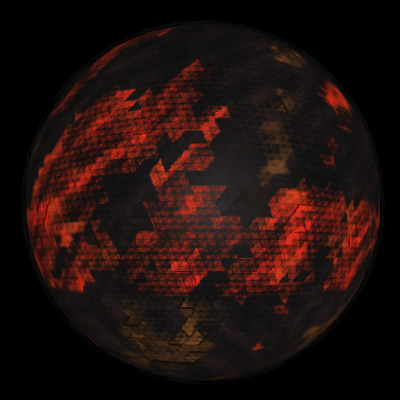Proto Thermic Dwarfs

According to the Planetary Classification List, between the small asteroids of the Small Body Group and the ‘real’ worlds of the Terrestrial group lay the Dwarf Terrestrials. These are planets often too small to hold onto a thick atmosphere, but large enough to form a spherical shape. They are often found as moons of larger worlds, especially Jovian worlds, but can be primary worlds in their own right.
It’s been a while since I’ve posted anything about WorldGen, but my upcoming Traveller campaign is going to require a lot of randomly generated star systems, so I’m fleshing out a variety of new world types, starting with the dwarfs. I’m also adding to the original list, as I find gaps in the types of worlds I want to produce.
There are many different classes of Dwarf Terrestrials, with many types and sub-types, so I’m going to split this into several posts covering each class at a time. The classes are pretty much divided according to their geological activity, and consist of the Proto Thermic, Geo Passive, Geo Thermic, Geo Tidal and Geo Cyclic classes.
The first class we’ll look at is the Proto Thermic class.
Proto Thermic Class
The Proto Thermic class of bodies are young, still in the process of forming. As such they can often have thick atmospheres since they haven’t had time to lose them to the vacuum of space. This also means though that they are often too hot and unstable for life or habitation of any sort.
Over tens of millions of years they will cool down into something more stable, often becoming either Geo Passive or Geo Cyclic worlds, depending on their size and how many volatiles they manage to hold onto.
Proto Lithian

These are normally young worlds within the first 100 million years of formation. They are mostly made up of silicate materials, with some proportion of heavier metals such as iron as well. These tend to settle towards the core, where they remain molten and often generate a respectable magnetic field. This helps the world retain its atmosphere.
The crust is often molten, or at least partially molten, with a large degree of geological activity. The atmosphere will be a mixture of gases, mostly Hydrogen but also full of anything else that is being ejected by the volcanoes. Over time, as the world cools and the magnetic fields weaken, the atmosphere will escape to space.
Proto Ferrinian

These worlds are similar to Proto Lithian worlds, but have a higher metal (iron) content. They tend to be denser, so have a higher gravity and are able to hold onto their atmosphere for longer. The high metal content can lead to molten metal seas on the surface, and such worlds can look hotter than Proto Lithian worlds due to glowing brighter.
Such worlds tend to have a large molten metal core which can produce a strong gravitational field. The field weakens as the world cools, but initially it can produce a brightly coloured aurora around the world’s poles.
The regular mixing of crust and core can mean that there are large quantities of metal resources available on these world types. Unfortunately, this doesn’t make them easy to use as a resource due to the difficulty in actually mining a world where the majority of the surface is molten lava.
Proto Carbonian

Carbonian worlds are rich in carbon, tending to be much darker than similar worlds. The atmosphere will tend to be full of soot and other carbon compounds, giving the world a very low albedo. Like their Lithian and Ferrinian counterparts though, they are too hot to be settled, and often have molten surfaces which are rapidly reshaping themselves.
Unlike the previous types though, they have smaller amounts of metals, and tend to lack magnetic fields which causes them to lose their atmospheres quicker.
Proto Gelidian

Proto Gelidian worlds are principally made up of volatiles, such as water ice. They normally have a silicate core, though the surface will be covered in water or similar substances. The hot temperature of the core keeps the water boiling hot, which produces a dense atmosphere of water vapour – the pressure of which can prevent further boiling.
Such worlds are likely to lose their atmospheres and cool down quite quickly, reverting to icy Gelidian worlds, or Bathic worlds if they are within the snow line. They are unlikely to form close to star, but if they do then the volatiles quickly boil off, leaving a small rocky core and not much else.
For the most part, such worlds freeze too quickly to have any chance of life arising.
Finding Proto Thermic Worlds
True Proto-worlds will only be found in young star systems, since in older systems they will have finished forming and cooled down into a stable old age. As such, they may be found as planetoids in a proto-planetary disc around hot young stars.
They can be formed (or re-formed) later through planetary collisions, though in such cases they may be lacking volatiles at this point. It’s also possible that a world that has drifted (or stayed) too close to its parent star may remain in these states for a lot longer. Again, in these cases their volatiles will have been lost, leaving only a molten surface which is just as uninhabitable as their younger cousins.